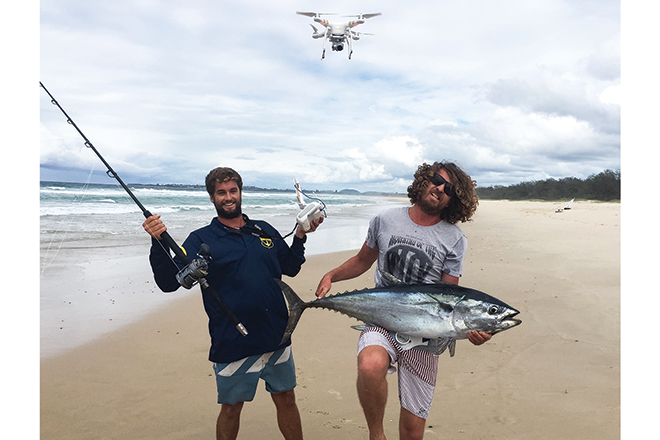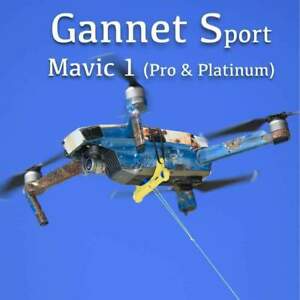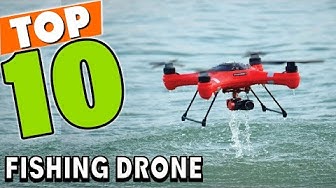
If you are an avid fisherman and live in Australia, you can now use a drone to get an aerial view of the waters around your property. The drones can be equipped with a variety of features, including a GPS positioning system, a GPS receiver, a GPS receiver, a GPS payload release, and an angle adjustable camera. There are also fishing lines available that can be used for fishing. They are very stable and secure. One such example is the SKY RIGGER drone.
SKY RIGGER drone fishing line
The SKY RIGGER is a flexible fishing line system for drones that allows you to fish from the air with minimal effort. Two rotating leg clamps allow the system to be attached to a variety of drone models. The release mechanism is designed with a bayonet-style connection and a cam-lock arm to open the line clamps quickly. Sky RIGGER is unlike other drones and can be used for all types of fishing.
The SKY RIGGER's automatic release mechanism allows for the release of the fly when a fish strikes it. The line can be manually released by either your rod or hand. This feature is available on all models of the SKY RIGGER. It is strongly recommended that you first purchase a Phantom 3 before you purchase the new SKY RIGGER. The following are some pros and con's of the new line:
It features a mechanical payload release
The mechanical payload release is a key feature of a drone. Many drones have a release mechanism that allows the angler to easily remove the fishing line. However, some models do not have a release mechanism. Instead, users must "yank the fishing line" to free the drone. This can be frustrating, especially for people who aren’t comfortable using their fingers to release the line.

A payload release mechanism is also an important feature. The drone should have the ability to release its payload when it strikes a fish. This method is not easy to use. You can't just pull the fish up and let it go. Many have had positive experiences with the DJI Phantom. But, it is still not as advanced as other fishing drones.
It is equipped with a GPS positioning system
Rippton is an Australian-Dutch joint venture that specializes technology-oriented products for fishing. It was founded to improve the success rate of anglers by creating products that increase the enjoyment of fishing. Rippton’s Mobula drone comes with a GPS position system and remote release. The Mobula drone can store bait at the top, protect against kite clippings, and is eco-friendly.
It's lightweight, weighing just 3 pounds, and can fly for up to 18 minutes. It is also equipped with a high-tech GPS system that allows it to control it from up to 2,000 yards away. It can fly for up to 1000m, which is half a mile. It can take high-quality pictures of its surroundings thanks to its point of interest function. The camera's high resolution allows for great views of fish.
It comes with a failsafe feature
Aerokontiki's fisherman drone has a failsafe function: It monitors battery levels and releases fishing line when necessary. It will return to dry ground if it experiences a battery failure and continue its mission. It uses industrial-grade flight controllers and can operate anywhere without recalibration. The drone can be used in even the most challenging water spots, and is waterproof.

FAQ
Is it possible to fly my drone in my backyard?
Yes! These are called UAVs (unmanned aerial vehicles). There are many types of drones on the market today, including small quadcopters and large fixed-wing aircraft. The FAA recently published new rules on commercial UAV usage, which allows you to legally fly them for commercial purposes. It is important to remember that UAVs are not allowed near airports.
What are the rules and regulations for drones operation?
The FAA must register your drone. The registration process requires you to provide information about your device, such as its weight, dimensions, battery capacity, operating frequency, and battery life. A FAA identification number is also required.
How can I keep drones from my home?
Drones have become increasingly popular for home surveillance. But they also pose a security threat to privacy. If you want to avoid drone attacks, you should install motion sensors around your property and use them to detect any unauthorized flying objects.
What are the laws around flying drones?
The Federal Aviation Administration (FAA), oversees all aspects of drone operation in the United States. A certificate issued by the FAA is required to commercially operate a drone. After that, you must pass an exam and complete a course to learn piloting skills. You will then need to pay an agency fee.
Are drones allowed at public events?
As long as you comply with the rules, drones can be flown anywhere. If you intend to fly your drone at a public event, such as a parade or festival, you will need permission from the organizers.
Flying with a drone?
Drones have become increasingly popular for commercial and personal purposes. Drones are used for filming, photography, aerial mapping, search and rescue, as well as other purposes. Recently, the FAA approved new regulations for drones, including requirements for registration, licensing and pilot training. These modifications will ensure that drones remain safe and secure for all involved.
Where can I purchase a drone?
You can find many different types of drones online. Some people prefer buying their drones through Amazon, eBay, or Walmart. Others opt to purchase their drones direct from manufacturers.
Statistics
- According to ZipRecruiter, the minimum hourly wage of drone pilots is $20. (thedroneu.com)
- With the top 10% making over $100/h and the bottom 10% making as low as $10/h. (dronesgator.com)
- According to industry research from ZipRecruiter , there are 10 cities where the typical salary for a Drone Pilot job is above the national average. (dronesgator.com)
External Links
How To
How to Fly Drones With Beginners
A drone is a remotely-controlled aircraft that is used for aerial photography and surveillance. Drone technology has existed since World War II. DJI's Phantom quadcopters became commercially available in 2010. From beginner-friendly drones such as Parrot AR Drone 2.0 through professional-grade multirotor craft like DJI Mavic Pro, many types have been available.
You can fly a drone in many different ways, including:
-
Remote control - This allows you to control the drone from your hand. There are two types of controllers available: joysticks and on/off switches.
-
Manual Control – This method lets users remotely control the drone by using a smartphone app. The app will provide instructions and help you to locate the drone.
-
Autonomous Flight – This is when the drone handles all the piloting tasks. It allows the drone to fly independently without any human intervention. A drone must have a builtin camera and sensors capable to capture images and other data.
-
Triggered Flying - This method works in the same way as manual control. However, the pilot has to manually set up a route for the drone and it follows that route until reaching the endpoint. After the program is complete, the drone automatically returns to the ground.
-
Landing Gear- Some drones include landing gear that allows for safe landing if the power goes out or they run out of batteries.
-
Goggles: Some pilots use goggles in order to protect themselves against debris when operating.
-
Camera - Some drones are equipped with cameras allowing you to capture photos and videos from above.
-
Obstacles: Some drones are equipped with obstacle avoidance systems to prevent them from hitting obstacles.
-
Speed - Some drones can travel at speeds over 40 mph.
-
Battery Life – Most drones will last 20 minutes to three hours depending on how powerful they are.
-
Range - Some drones can travel upto 30 miles depending on their models.
-
Power source: Some drones will require an external power source while others can be powered by internal batteries.
-
Weight – Some drones are less than one pound, while other models can be up to four pounds.
-
Size - Drones range from small devices that fit in one's palm to large crafts that weigh more than 50 pounds.
-
Price - All drones fall within a specific price range, from high-end models that can cost thousands of dollars to lower-cost options starting at $100.